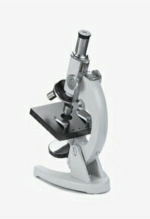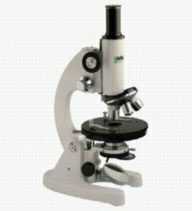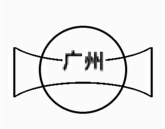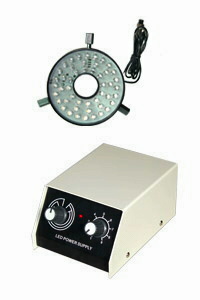| Quite often it is said in support of branded products, that foreign imports, outside of Europe, are inferior copies of Western products, but, while that might be true of produce in the I.T. industry, it does not appear to be true of the optical domain: quite often the reverse is true. The original L-201 microscopes, as they have shipped from Guangzhou, China, to the West, came supplied with a Wooden box, optical objectives of 4x 10x and 63x and a full range of eye lenses, 5x 10x and 15x, and an Abbe condenser. Branded products may differ to this. This is because, for the greater part of the past 40 years, much of China has been manufacturing these products on behalf of established suppliers, who place orders for vast quantities of a product, tailored and specifically branded to merchant specifications. Many of the original L-201 microscopes were distributed by small, independent traders and retailers, who preferred to stock GLOIC products, because they were made available to their distributing networks and because they tended to offer, exceptional quality, unparalleled by the branded products of their price bracket. Many of these shops were specialists, or independent Camera shops, who stocked GLOIC Microscopes for their customers to buy because they knew that there was a common source of manufacture, of both branded, and unbranded, products from China: in point of fact, while I was engaged in trying to obtain a source for a manual for the L-201, one large distribution company responded to my enquiry, by openly and overtly stating, that my attention would be better placed contacting Microscope product manufacturers
directly, which they said, in the greater part are largely all located in China! Of these, GLOIC is the Grand Daddy of production facilities: they manufacture, assemble, and distribute parts to other assembly plants for bespoke microscope designs. Production of the L-201 in Guangzhou has largely been superseded by production of the L-301, which is the same base model but has a quadruple turret, which takes 4 objectives. It is perfectly possible to upgrade the L-201 to the L-301 standard by upgrading the rotor. Many of the accessories which are available suit both models. The current GLOIC model L-301 looks much the same as the Brunel Wedmore microscope, but I am advised by Brunel, that the Wedmore, is, in fact, not a product they source from GLOIC. From my personal observation, I can see that the stem of the eyepiece of the Wedmore, is a little longer than that on the L-201, and that the Wedmore has a different design of stage to the L-201. That being said, I dare to suggest that many of the accessories available from Brunel, would also be suitable for GLOIC L-201, and the L-301 instruments. Details of the Wedmore range are available from Brunel here, for education here, and from UKGE here. Although there seems to be trends towards newer, safety first, designs of microscope, with stages that move with respect to a stationary stem, for all its advantages, I still consider the traditional design of the L-201 with a stationary stage, relative to an adjustable stem, better suited to work which involves micro manipulation tasks. |




